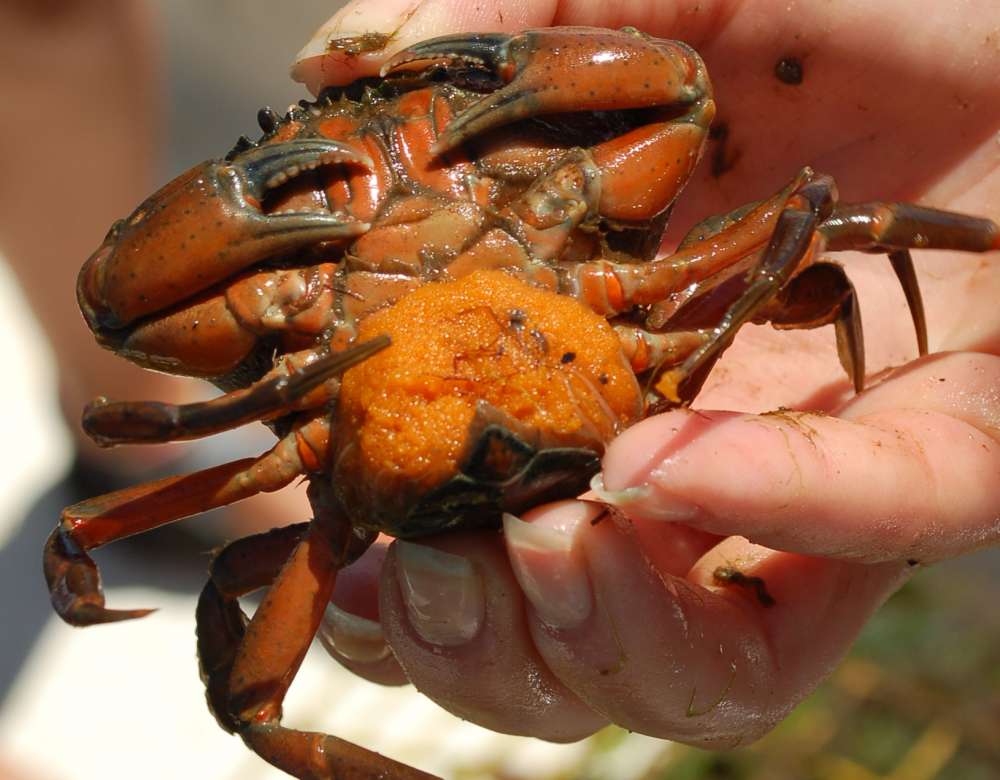The Wrack
The Wrack is the Wells Reserve blog, our collective logbook on the web.
The Wrack is the Wells Reserve blog, our collective logbook on the web.
WELLS, Maine, February 12, 2021 — The Wells National Estuarine Research Reserve and the University of New Hampshire are among the first to test a modern technique, environmental DNA analysis, for surveying the invasive green crab in northern New England estuaries.
“We monitor invasive green crabs because of their harmful effects on softshell clam populations and salt marsh habitats,” explained Laura Crane, a research associate at the Wells Reserve. “But surveying green crabs using traditional methods is a time-consuming process. The environmental DNA method, also known as eDNA, is relatively inexpensive and has proven to be effective for monitoring many aquatic species. We wanted to know how well it would work for crabs in estuarine environments.”
The research team looked for green crab DNA in water and sediment samples taken both from a salt marsh and from small aquariums in a laboratory setting. They found environmental DNA methods worked best when egg-bearing female crabs or crab larvae were present in the aquariums. In other situations, they discovered little or no DNA from their study species. The findings were published in the journal Ecological Indicators.
“Our work demonstrates the potential for using eDNA to survey green crabs in estuaries,” Crane said. “It also highlights the challenges associated with this method when surveying hard-shelled organisms like crabs, and the importance of accounting for life stage when considering the technique.”
Crane said eDNA methods have been extensively tested and successfully applied in research on fish and amphibians. She explained that aquatic animals are constantly shedding bits of themselves into the surrounding water. As they lose scales or tissues, eliminate waste, and release sex cells, their characteristic DNA is carried into the water and falls into sediments. By collecting and analyzing samples for eDNA, scientists can identify which species live nearby, Crane added.
“Apparently, hard-shelled crustaceans like crabs do not usually exude enough DNA into their environment to always leave clear evidence they are present,” Crane said. “But during spawning season, egg masses and millions of tiny crab larvae can make DNA easier to detect.”
The open-access article, “Effects of life stage on eDNA detection of the invasive European green crab (Carcinus maenas) in estuarine systems,” is available for download at wellsreserve.org. The research was funded by a grant to the University of New Hampshire from the National Estuarine Research Reserve System’s Science Collaborative.
# # #
About the NERRS Science Collaborative
The National Estuarine Research Reserve System’s Science Collaborative supports collaborative research that addresses coastal management problems important to the reserves. The Science Collaborative is managed by the University of Michigan’s Water Center through a cooperative agreement with the National Oceanic and Atmospheric Administration (NOAA). Funding for the research reserves and this program comes from NOAA. Learn more at https://coast.noaa.gov/nerrs/ or www.graham.umich.edu/water/nerrs.
